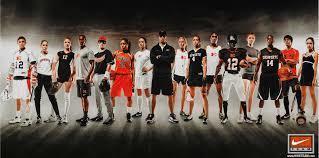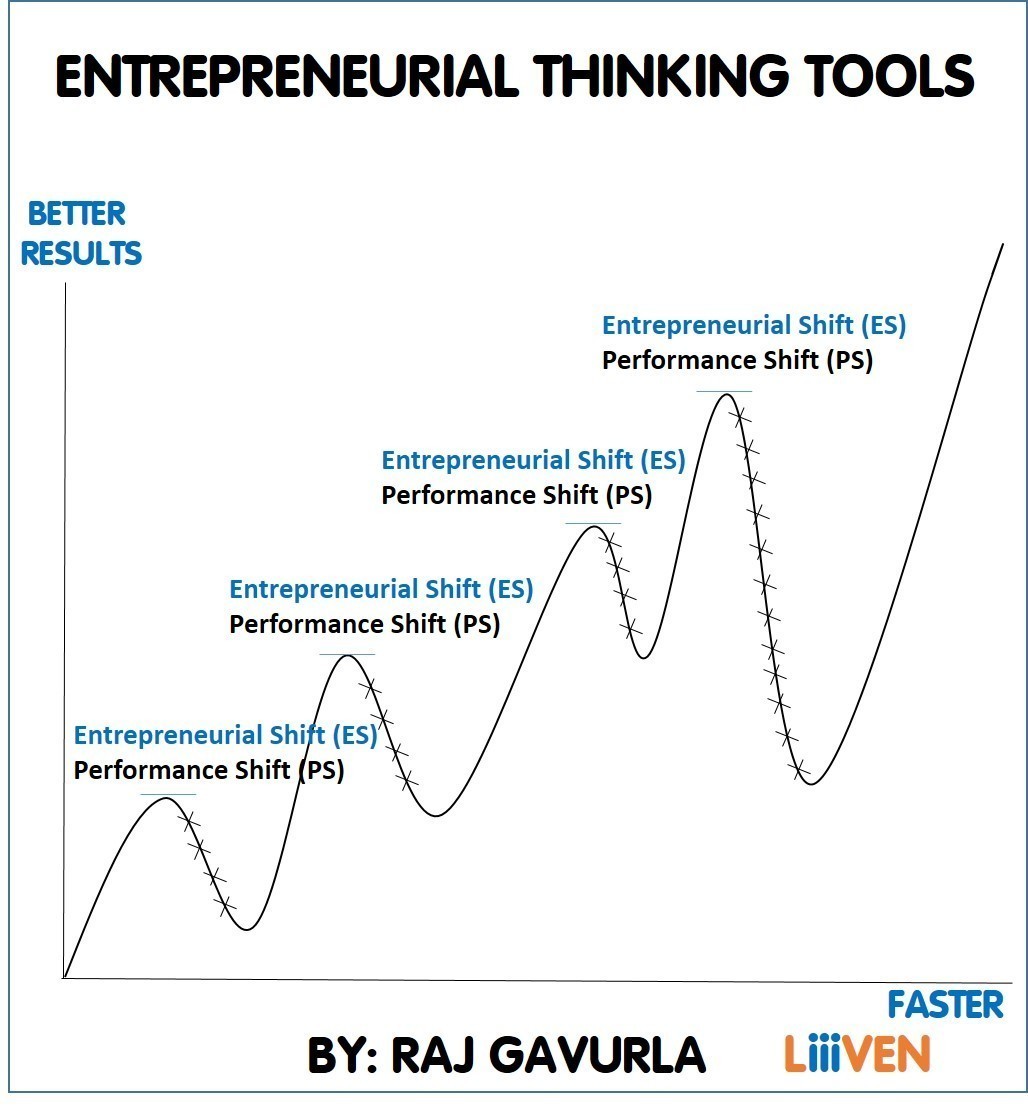Tag Archives for " confidence "
What’s The Difference Between Attending A Live Event & Watching A Video?
“You’re unique, different, and in leadership of your situation. Don’t compare yourself to anyone.” – Raj Gavurla
Have you attended an event in person and watched the same event on video? There’s a huge difference!
1. In person attendance, one actually senses, feels, and experiences the ambiance of the entire event. The featured speaker(s) message is more meaningful and engaging. You see things you don’t see watching a video. You participate in select activities and network (build relationships) with attendees (people you know and those you don’t know). Also, if you are fortunate you get to interact with the speaker(s) by asking questions or attending a private dinner the night before.
You might schedule other meetings during non-event time and see a new place or experience a magnificent place again. It also serves to get you out of the office and realize how everything is in some way interconnected. You broaden your business and life story.
2. When watching a video the value is greatly reduced. The meaning of what is being said can be distorted because the connection of being there in person isn’t there. If you think, how can that be? Then, video an interaction with you participating and then watch the video in private. You’ll see the differences and meaningfulness in value decrease.
There is a time for both. Determine which is of most value for your situation.
“Don’t let the noise of others’ opinions drown out your own inner voice.
Have the courage to follow your own heart and intuition. ” – Steve Jobs
For programs and services, contact Raj at 864.569.2315, raj@rajgavurla.com, LiiiVEN.
New Resource:
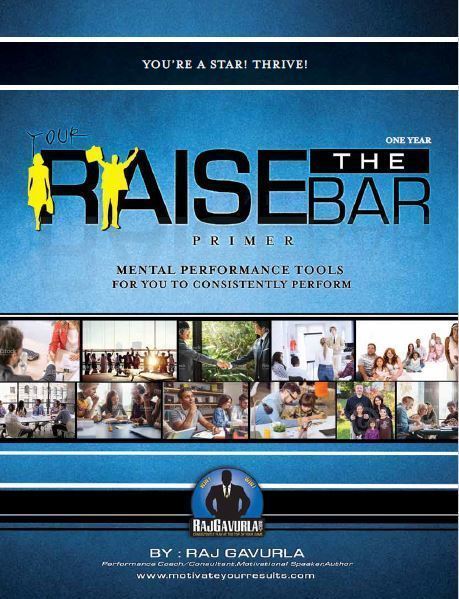
Consistently achieve your business goals, break-through performance barriers, and stay motivated and inspired with my mental performance coaching workbook.
Build and grow your mental performance skills using your own thoughts with a very simple mental structure. The workbook becomes customized by you with your own thoughts because your mental challenges are unique to your level of business and what’s happening in your life. You practice the knowledge skills of business. How about the mental performance skills to consistently learn how to perform in “the zone” (optimal performance) for success? Order Now! https://www.motivateyourresults.com
How To Win Playing Better Tennis?
“Win playing better tennis.” – Raj Gavurla
I really understood you had a tennis match after watching the NBA Playoffs last night. How did it go? My job is to performance consult and performance coach at the professional, college, academy, high school, and recreational levels. The main difference between them is better mental performance skills. Most of the pros know how to hit the ball. It’s bettering their mental performance skills to play better tennis they need to win more.
Yes, I also play tennis and I like playing with all levels because I approach each with a different frame of mind. All levels of players pose a different challenge to me. Recently, I’ve been playing with a group of recreational players. They see me warm up beforehand, bring my water, and my chair and watch me as I warm up and say “that’s what we need to do”. Yet, week after week they come out and just start playing. They warm up without practicing their volleys and overheads. It’s as if they are enthralled with the baseline although they are playing doubles. There is no serve and volley except me.
The wild thing is it is just as competitive as a Grand Slam Final with lesser mental performance skills and tennis skills. Since I can help their mental performance skills, I do and they’ve wised up and some take lessons on tennis technique (how to hit the ball better). They haven’t wised up yet to take mental performance coaching lessons.
While playing “my coach” (I call one of them that). He tells me to “play with better players” and is very hard to please. I can hit ten “nice” or “good” shots and he’ll point out the three I didn’t hit well. He compares me to professional players like Federer and Nadal. I’m honored by the comparison as he does know what he’s talking about when I’m not consistent or don’t move into the right position. He says, “I watch them on T.V. and at live tournaments”. Obviously, I’m not as robust of a tennis player as the pros.
Recently, we were closing out a match and he was telling me not to do this and that. I called a mental performance skills coaching timeout. I said, “all this negativity isn’t helping us”. How about saying, “finish the match” or “see the ball”. A week later we were in a similar situation, and he was encouraging and motivating and for a long period silent. After we won, he actually complimented me with “good”. Wow! Then he said “you need to win a Grand Slam”. I wish he was around sooner in my tennis life.
I gave him an autographed copy of my Your Raise The Bar Primer: Mental Performance Skills workbook. He looked at it and said “that takes commitment”. My response, you can stay at status quo and go through the motions week after week or have fun and win more. Which do you want? My coach has been working on it. I already see a difference in his ability on the court. If you need cabinets installed that’s my coach’s real job.
Yes, I do need to play with better players but I enjoy playing with all levels and at the recreational level I’m able to work on shots that I’m not able to do so against better-skilled players without first honing it. Some of the guys played in high school and one in college so it’s not as if they are beginners.
For those who still are working on technique, here are six videos to watch showing the legendary, Andre Agassi. I myself am hitting better volleys, overheads, and serves after watching. Remember, you also need to work on bettering your mental performance skills. The combination helps you win playing better tennis.
“Children are wonderfully confident in their own imaginations.
Most of us lose this confidence as we grow up.” – Sir Ken Robinson
For programs and services, contact Raj at 864.569.2315 or raj@rajgavurla.com, LiiiVEN.
You Don’t Need To Live A Double Life In Your Workplace
“You Don’t Need To Live A Double Life In Your Workplace.” – Raj Gavurla
Do you come to your job or the playing field leading a double life? You don’t need to. How is this possible? I’m there to work (complete tasks, etc.). That’s what they pay me to do. Years ago there was a job I inquired about with someone who worked for the company. He proceeded to tell me “you have to set up equipment”. I waited to see if he had more to say. He didn’t. I wasn’t interested in the job. Why? Because work is more to me than completing tasks (it’s part of the job) and receiving benefits. I understand you have family and friends outside of work you have fun, rewarding, and enjoyable camaraderie with. How about having fun, rewarding, and enjoyable camaraderie with your colleagues or teammates?
Camaraderie is one of the keys that keeps employees performing, retains, and recruits. It also plays a major role in wellness (well-being), motivation, inspiration, engagement, a positive attitude, leadership, and execution.
What’s a solution to nurture camaraderie in the workplace? By using a small group personal team matters approach. Do you have thousands, hundreds, less than fifty, ten to twenty, five or fewer employees or teammates? The larger the business, organization, or team the harder it is to have camaraderie with everyone. Regardless of size test the following:
Break up into “small personal teams”. A “small personal team” is a group that discusses (has dialogue) about personal matters not directly related to your job. For example, your family, what you’re doing this weekend, what you did this past weekend, your health, nutrition, fitness, your parents, kids aspirations, your non-work challenges, crisis, someone passing, accident, hobbies, movie, best place to get something, book you’re reading, mountains, sports, festivals, etc. Apply the learning.
A Customized Structure Might Look Like:
1. Ask people to participate sharing why. Do not require them to participate.
2. For those who join a personal matters team, make what’s discussed confidential. That doesn’t mean you can’t share your situation with someone outside of your group. Use your discretion.
3. Meet once a week for 45 minutes to an hour in a quiet place (conference room, courtyard, etc.)
4. Talk about and share personal matters important to each group member
5. Close the meeting
Use Metrics and Collect Data On The Outcomes:
Are employees mentally performing better?
Is employee retention increasing?
Is it easier to recruit?
What effect does it have on wellness (well-being), motivation, and inspiration?
What effect does it have on engagement, a positive attitude, leadership, and execution?
Small Personal Matters Team Examples:
Look at an amazing family
Look at a business team. One of the things employees, athletes, investors, donors, and philanthropists look at is the teamwork exhibited.
Look at our military. They have tremendous camaraderie protecting each other, to survive, and protect us. They know each other and have nicknames for each other making it easier to accomplish their mission.
Look at a sports team and you hear athletes talk about the camaraderie or if retired the camaraderie is what they miss.
I remember from reading Oscar Robertson’s biography he worked with people of a different skin color and they never had time for camaraderie. Just do the work because in those times that’s how it was. People didn’t know each other at work and never met outside of work with people of a different skin color. He said, “that hurt”. I’m sure some people of the other skin color had the same thought and feeling, “that hurt”. Thankfully, we the people have made tremendous cultural and societal progress.
Another example, I went to college to graduate/get an undergraduate degree in electrical engineering. That was the main goal. It’s the camaraderie with a few friends I remember and miss most. Although we don’t talk often or see each other as often I know, feel, sense, and believe we are connected forever.
My final example are my friends from Leadership Greenville. I shared with a small personal matters group my mom had a stroke. One told me his dad passed away from a stroke and another told me they had a family member who had a stroke and it’s a slow process. People get better. Until the emergency personnel told me your mom had a stroke, I’ve heard of the word stroke but knew nothing about it. Learning about a stroke and talking with my small personal matters team gave me lived experience insights I couldn’t get from a textbook that helped me to mentally perform to be a caregiver for my mom to make her well. She is talking better and she needs and wants to walk better and drive a car.
Implementing small personal matters teams in your businesses, organizations, and teams might transform the narratives, conversations, and outcomes. It should be helpful too and take pressure off and inhibit the performance anxiety your employees, team leaders, supervisors, managers, bosses, management, executives, and owners are experiencing. Yes, conventions, conferences, and special events are still needed and wanted for all your employees or sports team to participate in.
“A goal is not always meant to be reached, it often serves simply as something to aim at.”
– Bruce Lee
For programs and services, contact Raj at 864.569.2315, raj@rajgavurla.com
CHANGE ISN’T A COMPETITIVE ADVANTAGE: WHAT IS?
“Fortunately world-class business occurs with preparation and communication.” – Raj Gavurla
Since change isn’t a competitive advantage, how are businesses, organizations, and teams solving their need(s) for performing (high value/value add) better results (better ROI/higher margins) in a faster time?
Answer: Transform Performance
Examples:
1. Most organization development shows a top-down flow. Whether their competitive advantage starts at the top (trickle down) to the bottom or from the bottom (grassroots) to the top. How about transforming your performance lens to organization development showing forward performance (—–> timeline fashion): Founder-Board-President/CEO – Each Colleague (Teammate) – Business Unit – Division – Department – etc. as they came into existence in a win forward performance for your competitive advantage? Forward performance mentality is essential to living (doing) for each person to thrive.
2. Sometimes when I shoot baskets kids are also shooting on the same basket. When they make a shot and I grab the rebound they are quick to say “change” meaning they want me to pass them the ball as a return for making their shot. Since I’m also a performance consultant and private performance mental skills coach, I want to tell them “Change isn’t a competitive advantage. I would have thrown the ball to you without you saying change.” Instead, they need to shoot the ball from the same spot the same way (“repetitions – keep going to the well”). If an adult paid my fee, the kids win forward performance.
3. The better tennis player you are the more mental tennis is. What differentiates the number one players and teams in men’s and women’s tennis is their mentality. What are you doing to work on your private performance mental skills so you consistently become a better tennis player.
4. In business, work, sports, and life identify your need(s) to win forward performance whether experiencing success (fun) or negativity. Most likely you know what to live (do) and/or you might need to pay for support service(s) to work with you to solve your need(s) to win forward performance.
5. How do you accomplish any endeavor in life (i.e. your dreams, vision, goals, and/or mission)? By living (doing) it.
“You cannot start the next chapter of your life if you keep re-reading the last one.”
– Michael McMillan
For programs and services, contact Raj at 864.569.2315, raj@rajgavurla.com
Learn The Habits of Win Forward Performance
“Learn the habits of win forward performance.” – Raj Gavurla
I was featured on this tennis blog talk radio show as a substitute for Allen Fox. It’s for tennis players, coaches, fans, and enthusiasts, Coach Danise’s Blog Talk Radio program is forward performing. I’m glad to create and share my expertise inspiring dialogue with Coach Danise.
For those who want to contact me for Performance Coaching & Consulting or for me to deliver a Keynote & Workshop visit: http://www.rajgavurla.com/privatementalperformance.html
For those who want to buy my workbook, Your Raise The Bar Primer: Mental Performance Tools mentioned in the radio program for all levels of play visit: http://rajgavurla.com/tennisworkbooksandprograms.html
Click Here To Learn From The Radio Program:
Learn The Habits of Win Forward Performance
“Your value doesn’t decrease based on someone’s inability to see your worth.” – Unknown
For programs and services, contact Raj at 864.569.2315, raj@rajgavurla.com
Endless Entrepreneurial Character (Greenville, SC): Addresses Joint Session of Congress
Looking to deliver this message and relevant messages for clients.
Add Performance: Stop Settling for Change and Behavior
“Add performance” – Raj Gavurla

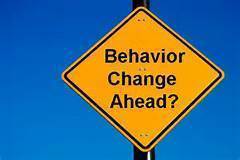
People do not like change. First off, it implies something is wrong. Have you heard comments such as “you need to change”, “you need to change your behavior”, or “attitude” without a comment on how to do so? President Obama was a change candidate and so was Donald Trump. A CEO often is hired to create positive change or a turnaround. Many mergers and acquisitions have pursued this reason as well. It happens in sports. I asked my brother-in-law why did the Houston Oilers not keep Bum Phillips? He said they wanted a change. Bum had led two of his teams to the brink of a Superbowl. After being terminated, the Oilers declined for a very long time. All for the sake of change. Change is inevitable, however, there better be more at stake than preserving the status quo or making the numbers look good.
An example is shooting a better golf score when you have to clear the water from the fairway to land on the green. If you practice changing behaviors of how not to hit the water, you’ll improve but not add to your performance (better). You’re using an outdated form of Taylorism that studies and analyzes each piece instead of a better way to achieve your objective(s).
So what’s the solution to change and changing behaviors which are more palatable? The solution is “add performance”. In any situation, whether good or bad follow it with the words “add performance”. Sure, changing behaviors is needed but there is too much emphasis put on changing the behaviors instead of emphasis being placed on “added performance”.
Therefore, for our golf example use “add performance” to hit the ball onto the green. Use imagery to visualize the ball hitting the green and your mind and body will automatically make the necessary adjustments. You don’t need to study each cell and neuron in your body to orient them the right way. Focus on the “added performance”.
In business when deciding on investing in an initiative, does it add value to your organization, do your employees see it of value, and does it generate a good ROI. Use this as a barometer for your initiative and you’ll experience less uninformed political anarchy and useless conflict.
So, do you want clients? Then, “add performance”. Do you want to make high-value money? Then, “add performance”. Do you want health? Then, “add performance”. Do you want a cure? Then, “add performance”. Do you want to lose weight? Then, “add performance”. Do you want a better relationship? Then, add performance. Do you want to stop being tired or fatigued? Then, “add performance”. Do you want a faster run? Then, “add performance”. Do you want your kids to make better grades? Then, “add performance”. Do you want a championship? Then, “add performance”. Do you want a better job? Then, add performance.
For programs and services, contact Raj at 864.569.2315, raj@rajgavurla.com.
Entrepreneurial Leadership: Grow, Build, Develop (Probability (Uncertainty))
“Grow, build, and develop the right way.” – Raj Gavurla
In the following weeks, I will focus on delivering practical and pragmatic entrepreneurial leadership tools. To receive these entrepreneurial leadership tools and much more you can invest in my manual Entrepreneurial Thinking Tools.
Buy now: motivateyourresults.com
This week we’ll apply the entrepreneurial leadership learning to the importance of probability (uncertainty).
Entrepreneurial Leadership Tool #1:
Entrepreneurial Success =
(Time (1 or 0) + Work (1 or 0) + Money (1 or 0)) x Probability (1, .5, or 0)
Probability (Uncertainty) (1, .5, or 0)
In 2017 where are you investing your entrepreneurial leadership? To maximize entrepreneurial leadership you want to invest in projects/endeavors at various stages and at various times with varying probability (uncertainty). Yes, the probability (uncertainty) of you being alive tomorrow has a probability factor based on lots of living factors.
In your business and projects, you want meaningful work with a probability (uncertainty) of a 1 (do it now), .5 (carefully consider doing it), and 0 (don’t do it). There are no other numbers besides 1, .5, or 0. If probability (uncertainty) is a 1 then you know what to do. If it’s a .5 how to make it a 1 is very important to determine. If it is a 0 then it’s not worth investing. Don’t try to make a 0 a .5 or a 1. You’ll be wasting your time. Better results and time are of most value to you.
Therefore, Entrepreneurial Success = (Time + Work + Money) x Probability (Uncertainty)
Ex. 1: Entrepreneurial Success = (1+1+1) x (1) = 3 (do it now)
Ex. 2: Entrepreneurial Success = (1+1+1) x (.5) = carefully consider it (how to make it a 3?)
Ex. 3: Entrepreneurial Success = (any total other than 3 for time, work, money) x (any probability) = don’t do it
“Let go of those who bring you down and surround yourself with those who bring out the best in you.” Unknown
For programs and services, contact Raj at 864.569.2315, raj@rajgavurla.com.
Money (1 or 0)
In 2017 where are you investing your money? To maximize your money you want to invest in high-value services and products with ten times the return on investment (ROI).
Q1: Do your research and preparation show your suppliers service(s) and/or product(s) are of high value towards your objectives?
This focuses on the qualitative aspects of doing business. For example, setting a record, a pilot, image, brand awareness, and having more than one supplier so you’re more efficient and effective.
Q2: How do you determine there will be a ten times return on your investment?
This focuses on the quantitative aspects of doing business. The robust investments/projects return ten times greater ROI upon completion of the investment/project. If it makes sense to reinvest and/or add service(s) and product(s), then best to do so. All others vary based on time period. Work with your supplier to determine how to receive high value and ten times the ROI.
Think of three investments made in your business?
1. Invested in a marketing campaign
Depending on if this is already a revenue producing service or product or if it is a pilot the same formula applies:
Investment = High Value and ten times the ROI
In a marketing campaign of high value is brand awareness. Also, you need to determine the way to receive ten times the ROI. The reason is because your project and business are unsustainable without it.
2. Invested in technology
Of high value are increased capabilities, efficiency, ease of use, and status. Also, you need to determine the way to receive ten times the ROI. The reason is because your project and business are unsustainable without it.
Investment = High Value and ten times the ROI
3. Invested in education
Of high value are increased skillset, get a better job and new opportunities, and adding your skillset to another market. Also, you need to determine the way to receive ten times the ROI. The reason is because your education/learning and business are unsustainable without it.
Investment = High Value and ten times the ROI
4. Think of three private investments made?
Examples are a house, car, healthcare, and the food you eat. Of high value are shelter, safety, warmth, nutrition, and good health. Also, you need to determine the way to receive ten times the ROI. The reason is because your living is unsustainable without it.
Investment = High Value and ten times the ROI
I will cover funding (entrepreneurial fund (EF)) when I teach my second Entrepreneurial Success Tool.
Calculate your qualitative (high value) and quantitative (ROI) for each of the above. Are you researching, is your preparation, and investments done with the right mindset? Determine how high value delivers a ten times ROI for you.
“Your qualitative drives your quantitative.” – Raj Gavurla
For programs and services, contact Raj at 864.569.2315, raj@rajgavurla.com.
Work (1 or 0)
In 2017 where are you investing your work? To maximize work you want to do work that is meaningful, has value, and is important to you. This includes work that has value in your business, professional association(s) member volunteer work, community volunteer and advocacy work, home project(s), and faith-based volunteer work. To reiterate, it should be meaningful to you, has value, and is important to you. This doesn’t mean it needs to be work your family or friends want to do. It’s work you want to do. In the Entrepreneurial Success Formula work has a value of “1” (has value to the company) or “0” (no value to the company).
“Don’t let someone who gave up on their dreams talk you out of going after yours.” – Zig Ziglar
For programs and services, contact Raj at 864.569.2315, raj@rajgavurla.com.
Time (1 or 0)
In 2017 where are you investing your time? You want to maximize your time. This has the most value to you in living your great dreams, goals, vision, and mission. The best way to maximize your time is to prepare.
Do you attend a meeting by preparing? This is the number one reason one person does business with you versus with another person.
Do you schedule an in-person meeting when a meeting isn’t wanted?
Do you schedule a conference call when an in-person meeting is wanted?
Do you return a phone call or reply to an e-mail?
As a humanitarian and citizen, maximizing your time gives you the time to do community volunteer and advocacy work.
Put your criteria to determine the best approach for you and the other party. Just because you or they want it doesn’t mean it’s the best approach. Only, do what adds value for the both of you. Next week, we’ll apply the entrepreneurial leadership learning to the importance of your work. In the Entrepreneurial Success Formula time has a value of “1” (can be done in a timely manner/worth the time) or “0” (time prohibitive).
Entrepreneurial Leadership Tool #2:
Invest, Save, Benefits, Entrepreneurial Fund (EF)
Entrepreneurial Leadership Tools #3:
Grow, Build, Develop
Entrepreneurial Leadership Tools #4:
Performance Shift (PS) and Entrepreneurial Shift (ES)
Entrepreneurial Leadership Tool #5:
Better Results / Faster
Entrepreneurial Leadership Tool #6:
Do 1% Better
I will add more. To receive these tools and much more you can invest in my manual Entrepreneurial Thinking Tools. Buy now: motivateyourresults.com
“Every moment you live in the past is a moment you waste in the present.” Tony Robbins
For programs and services, contact Raj at 864.569.2315, raj@rajgavurla.com.
FORWARD PERFORMANCE IS COUNTERINTUITIVE
“Breaking through a performance barrier is counterintuitive.” – Raj Gavurla
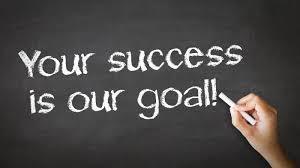
Look outside! Did you plant those trees, create the sky, the clouds, warmth of the sun, birds, grass, air, and those mountains? Your answer is “no”. My special news for you is “there are no days off from living”. Believe me, you know why.
In my performance, entrepreneurial leadership, and sports/athletic coaching/consulting, I use to hear from my clients, “I had a bad day”. “I was off today.” No way! When clients receive coaching and complete their Your Raise The Bar Primer: Mental Performance Tools workbook they soon realize what I mean. Daily, I have them rate their day.
An example of their choices and the criteria we agree upon in our session might look like the following:
Auspicious Day
Today is my birthday! Any grand occasion is permissive. Think birthdays of family, anniversaries, graduations, a spiritual occurrence, special recognition (awards), end of a project, a big win, your firsts, and holidays. Do my exercises and stretches.
Robust Day
The list is private to me, however, some items are when I have “unexpected success”. It’s the easiest type of success. When I learn and apply what I learned for better performance. I take what I’ve been working on to the next level. I meditate, do my exercises, and stretches.
Perfect Day
The list is private to me, however, when I do my exercises and stretches, eat right, work, and have something restful, relaxing, fun and enjoyable in the evening. Came up with a “creative innovative inventive entrepreneurial idea”. I meditate.
Very Good Day
The list is private to me, however, when I accomplish a perfect day without coming up with a “creative innovative idea”. I work, eat right, do my exercises, and stretches.
Good Day
The list is private to me, however, when something takes longer than expected or usual and I finally figure it out. I do my exercises and stretches.
Not So Good Day
The list is private to me, however, anything bad that happens to me or someone I know. Also, my computer crashes etc. I didn’t do my exercises and stretches.
My Star
Then I complete “my star” in my workbook by filling in a “new record”, building a relationship forever, and/or “I met someone new” and had a real conversation with them. Success!
I also pray throughout the day when I need or want to. Now, you won’t ever have a “day off from living” or a “bad day”. After sessions with my client, they begin to see how to really use my workbook. They become forward performing instead of “negative” towards them self or others. I’ll repost this on Monday, however, I wanted to give you a high-value target on my birthday, an auspicious day. Apply the practical learning.

